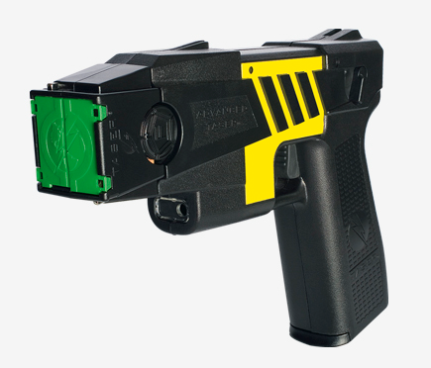National Institute of Justice Finds Tasers Safe
Law enforcement nationwide do not need to refrain from using Tasers on aggressive individuals they're trying to take into custody, according to a report from the National Institute of Justice (NIJ) released last week (.pdf) [1].
The NIJ report—which was directed by a steering group of representatives from the College of American Pathologists, the Centers for Disease Congrol and Prevention, and the National Association of Medical Examiners—found that police use of conducted energy devices (CED), commonly known as "tasers" after the popular brand [2], could continue despite controversy that CEDs have led to in-custody deaths of arrested individuals and are used excessively by police officers.
"There is no conclusive medical evidence in the current body of research literature that indicates a high risk of serious injury or death to humans from the direct or indirect cardiovascular or metabolic effects of short-term CED exposure in healthy, normal, nonstressed, nonintoxicated persons," the report concludes. "Field experience with CED use indicates that short-term exposure is safe in the vast majority of cases."
The report adds that the safety of CEDs holds true even when Taser darts strike an individual in the chest.
The report's conclusion was reached after an appointed medical panel of doctors and other specialists reviewed 300 incidents where police used CED on an individual, who then later died. The NIJ says it chose the panel explicitly to avoid possible conflicts of interest, ensuring the reader that no panelist has worked as a litigation consultant either for or against the devices.
The report does note that CED-use is not risk-free. Some individuals who died after being tased where "normal, healthy adults," the NIJ report notes, adding, however, that "many were chemically intoxicated or had heart disease or mental illness." The report calculates that the risk of death in a CED-related incident is 0.25 percent, adding "it is reasonable to conclude that CEDs do not cause or contribute to death in the large majority of those cases."
Tasers and other CEDs are extremely popular with American law enforcement. According to the NIJ, over 12,000 U.S. law enforcement agencies use CEDs. The report states that approximately 260,000 CEDs have been issued to police officers nationwide.The law enforcement community argues that CEDs are a necessary tool that helps officers subdue combative or uncooperative subjects, leaving both parties safer than if police used alternative methods. The NIJ notes that academic research supports those claims.
But there was a correlation during CED-related deaths that police officers shouldn't ignore. According to the panel's review, there was a higher incident of death when an individual was exposed to prolonged or multiple CED discharges.
"There is limited research with regard to exposures of greater than 15 seconds," the NIJ warns. "Further, extended CED exposure may not be effective in the subdual of some individuals with high levels of drug intoxication or mental illness. Therefore, if the CED is ineffective in subduing an individual after a prolonged exposure, law enforcement officers should consider other options."
The report also urges law enforcement to accurately record any CED-incident that ends in a subject's death. "The complete investigation should include the collection of information specific to CED-related deaths, such as the manner in which and the location where CED darts or prongs were applied."
